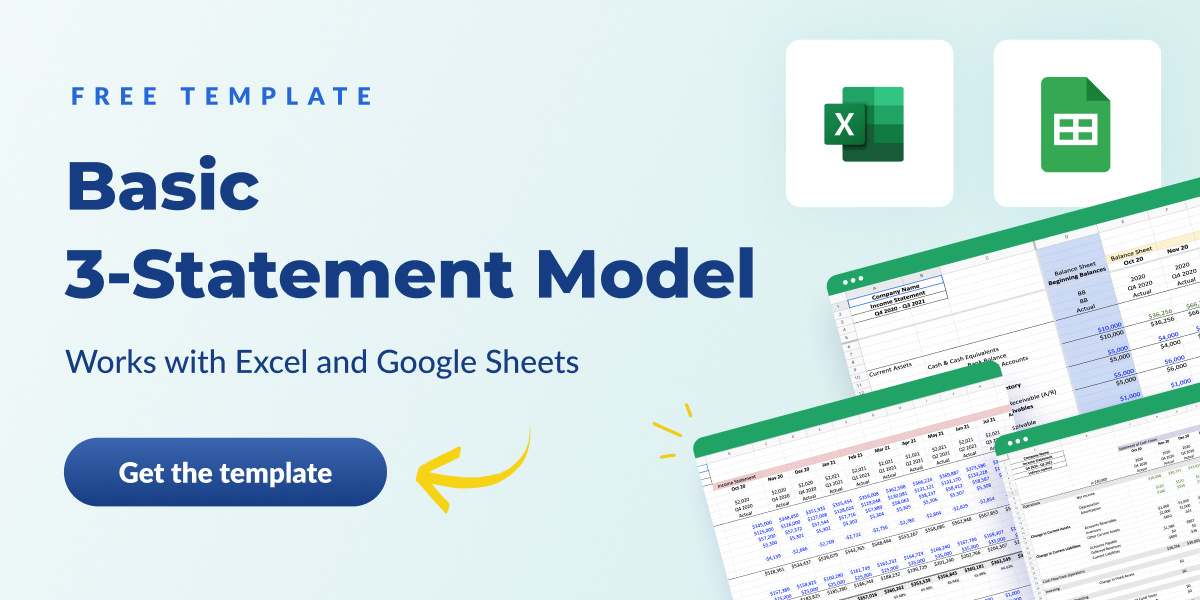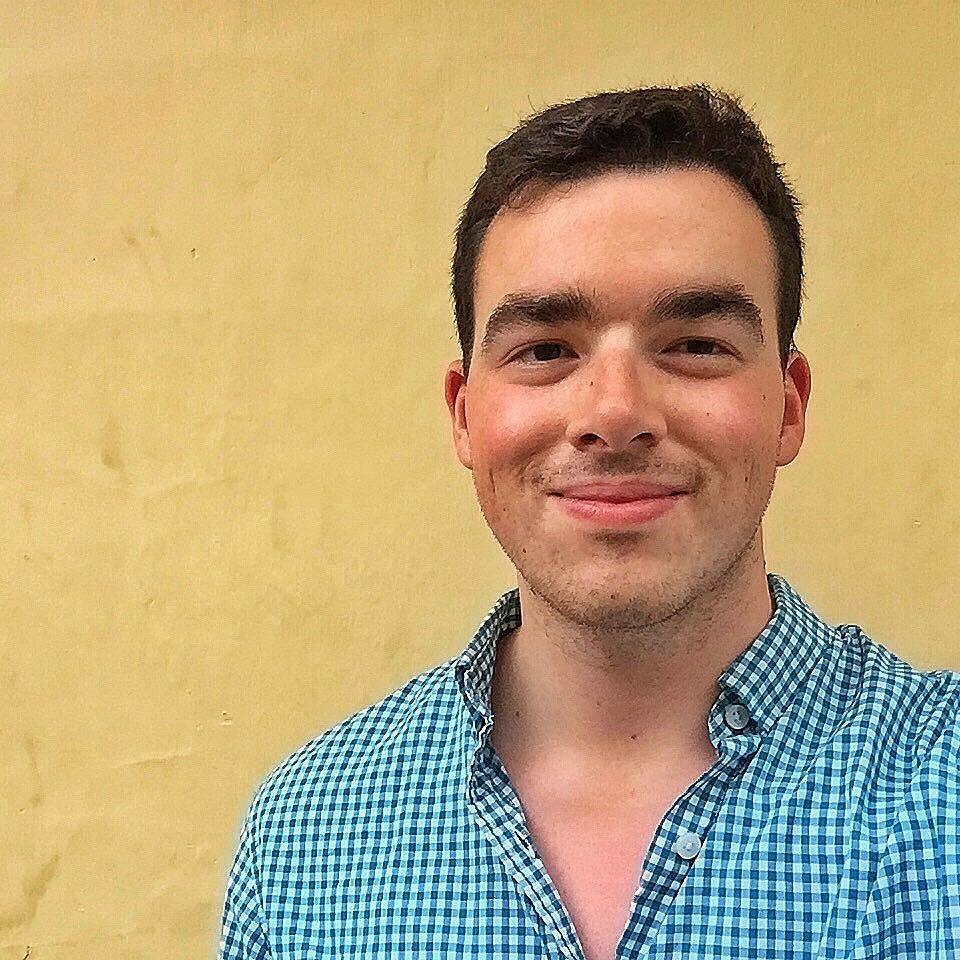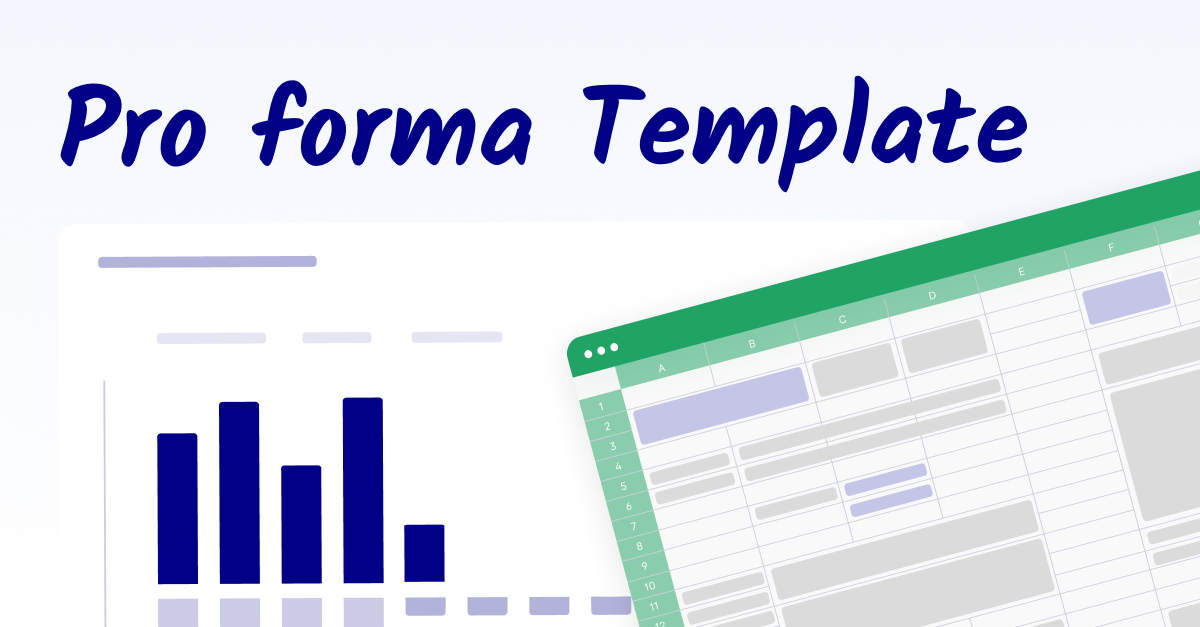Key takeaways
- A pro forma statement is a forward-looking statement that projects a company's future financial performance, excluding one-time costs like acquisitions.
- Common types include pro forma income statements, pro forma balance sheets, and pro forma cash flow statements.
- These tools help finance teams plan for different business outcomes and make better budgeting and investment decisions.
What are pro forma financial statements?
Pro forma financial statements are used to project a company's future financial performance. The term “pro forma,” which translates to “for the sake of form” or “as a formality,” reflects their role in shaping forward-looking plans rather than reporting past performance.
Companies use pro forma documents to explore the impact of strategic decisions, such as entering a new market, raising capital, or merging with another business. Unlike traditional financial statements, which follow generally accepted accounting principles (GAAP), pro forma statements allow you to exclude unusual or nonrecurring expenses to create more useful projections.
You can create pro forma versions of all the standard financial reports:
- Income statement
- Balance sheet
- Cash flow statement
These models give finance teams a clearer picture of potential risks, returns, and cash needs.
When do we use pro forma statements?
Pro forma statements are helpful during periods of rapid growth or change. Companies can use them to assess the impact of a proposed merger or acquisition, a new product launch, expansion into new markets, or other future changes.
They also play a key role in decisions like:
Some companies even use pro forma reports to rally internal teams—offering a transparent look at potential future earnings to help drive motivation and alignment.
Financial statements vs. pro forma statements
As defined by PwC, “Financial statements are written records that illustrate the business activities and the financial performance of a company.” They include records like income statements, balance sheets, and cash flow statements that reflect a company’s actual performance based on accepted accounting standards.
Pro forma statements, on the other hand, explore what could happen. They focus on the impact of hypothetical situations like funding rounds, new investments, or operational shifts.
Because pro forma statements don’t have to follow GAAP, they can be more flexible. But that flexibility comes with a caveat: it’s important to scrutinize the assumptions behind them, as they can sometimes present a more optimistic view than reality supports.

How to create a pro forma template
Creating a pro forma template involves a few key steps to ensure it accurately reflects your business's potential financial future.
Here’s how to build one:
1. Determine your base financials
Let's start with the basics. Determining your base numbers means gathering the figures from your most recent financial statements. Think income, expenses, assets, liabilities, and equity. These numbers are your starting point and will heavily influence your projections. These baseline figures serve as the foundation for your projections—so precision matters.
2. Identify major changes ahead
What’s coming up that could affect your financials? This could be anything from a merger or acquisition to launching a new product or expanding into new markets. These changes can shake things up, so it's important to spot them early.
Knowing what's coming allows you to adjust your projections and prepare for any financial twists they might bring.
3. Calculate the financial impact
Once you’ve outlined your potential changes, start estimating how they’ll affect revenue, costs, and profitability. Will a new hire raise payroll expenses? Could a product launch open up a new revenue stream? Use financial modeling to test different assumptions and assess viability. This step is where you figure out if your plans are financially sound and worth pursuing.
4. Model different scenarios
No single forecast will cover everything. Create multiple versions of your pro forma statement to account for different outcomes: best-case, worst-case, and most likely. Scenario planning is like having a map for the unknown. It helps you anticipate challenges and opportunities, so you're ready for whatever comes your way.
Examples of pro forma statement formats
Pro forma financial statements typically mirror standard reports, but with forward-looking data and scenario-based assumptions.
The most common types are:
Pro forma income statement
The pro forma income statement shows a company’s expected revenue and expenses. It helps companies understand how different variables, like pricing changes, new hires, or marketing campaigns, could affect profitability.
For example, if a business is considering a new marketing campaign, it’ll want to know how it'll affect its bottom line. They could create a pro forma income statement that excludes the costs of the campaign. This allows the finance team to isolate potential profit increases and determine if the spend is justified.
Pro forma balance sheet
A pro forma balance sheet is a financial statement showing a company’s expected assets, liabilities, and equity after a significant event, such as an acquisition or a new financing round.
An excellent example of using a pro forma balance sheet is if your company considers taking on new debt. You can see how the new debt will impact your company's financial position and make an informed decision about whether to proceed with the loan. After all, interest payments on debt can significantly impact a company’s bottom line.
Pro forma balance sheets are also helpful for showing the financial impact of proposed changes to your business, such as opening a new location or closing a current location.
Pro forma cash flow statement
A pro forma cash flow statement shows a company's expected cash inflows and outflows at a specific time in the future. They can be short-term (for daily operations), medium-term (for financial projections), or long-term (for investments or strategic decisions).
You might use a pro forma statement if you want to predict how new products will impact your company's cash flow or if you’re considering switching to a subscription-based business model.
Of course, this is important because cash runway is critical to a company’s ability to continue growing, pay employees, and invest in product development.
Looking for a pro forma cash flow statement in Excel format? You're in luck.
Click here to download the free Cash Flow Statement in Excel.
Benefits of using pro forma analysis
Pro forma analysis helps finance teams model “what if” scenarios, turning raw data into strategy. By forecasting outcomes based on hypothetical events, this approach brings clarity to the financial planning and analysis (FP&A) process.
Here’s how it adds value:
1. Financial planning and forecasting
Pro forma statements offer a window into your company’s potential future. By mapping projections against your current numbers, it can give you a sense of whether your business is on track to meet its financial goals and help you identify potential problems.
For example, a business might release a pro forma income statement to set a future revenue benchmark. That projection can account for expected growth in operations, net profit, cash flow, or market shifts. From there, it becomes easier to model capital investments and align resources accordingly.
2. Smarter decision-making
This analysis can help you make informed decisions about investments, marketing strategies, pricing tiers, and other aspects of your business plan.
For this reason, it's best practice to create pro forma statements as in-depth financial forecasts. They act as a strategic lens for business planning so you can reverse-engineer decisions based on where you want the business to go.
3. Asset and liability management
Pro forma templates estimate the financial viability of big operational changes. Let's say you’re considering expanding your business by opening a new location. You can project associated costs, forecast revenue, and assess whether the expansion makes financial sense.
This kind of forward modeling helps prioritize spending and mitigate risk.
4. Securing investments
Investors want to see evidence, not just vision. Pro forma analysis can articulate your growth plan, estimate return on investment, and demonstrate the business case for funding.
Investors could also use pro forma analysis to assess the potential return on their investment. Almost every fundraiser needs pro forma statements so that potential investors can understand the implications of the new capital infusion.
5. Evaluating protective mergers
Companies often decide to merge with the hope that the combined business will be worth more than the sum of its parts. But, not all mergers create value for shareholders, and some can even cause a loss.
By comparing different scenarios, you can determine whether the deal creates value or carries hidden downsides for shareholders.

Limitations of pro forma analysis
Pro forma analysis is a powerful tool for modeling future performance—but it’s not without its challenges. Because these statements rely on projected data, it’s important to view them as directional, not definitive.
Here are two key limitations to keep in mind:
1. They're based on assumptions
Pro forma analysis is based on your best estimates about the future, such as revenue, costs, and operating expenses. These assumptions may not always be accurate, which can cause misleading results.
Accuracy also hinges on your inputs. Incomplete or incorrect financial data can quickly lead to misleading conclusions.
The Securities and Exchange Commission (SEC) is wary of pro forma statements because they’re based on assumptions rather than GAAP.
2. It may overlook external forces
Another limitation is that pro forma analysis does not consider all factors that can affect a business's financial situation. They may not fully account for economic volatility, supply chain interruptions, or one-off global events like COVID-19.
That’s where tools like scenario analysis and sensitivity analysis become essential in modelling uncertainty and planning for a range of outcomes.
Pro forma financial statement terms to know
There are a few key terms that you should know when looking at pro forma financial statements.
- Gross margin: The percentage of revenue left after deducting the cost of goods sold (COGS).
- Operating expenses: The costs associated with running a business, such as rent, utilities, and salaries.
- Net income: What’s left after subtracting all expenses from total revenue, often expressed as a percentage.
- EBITDA: Earnings before interest, taxes, depreciation, and amortization. It is a measure of a company's profitability that excludes non-cash and financing-related costs.
Download our free pro forma statement templates for Excel or Google Sheets
Looking for a pro forma statement template to create your own financial statements? We've got you covered!
3-statement model pro forma template
Download the 3-statement model
This template forecasts future financial performance by combining three essential reports:
- Income statement: Projects revenue, expenses, and net income, helping you understand profitability under different scenarios.
- Balance sheet: Reflects changes in assets, liabilities, and equity over time, including retained earnings tied to net income.
- Cash flow statement: Tracks cash inflows and outflows. It starts with net income and adjusts for non-cash items and changes in working capital.
Use this model to simulate how strategic decisions, like new investments or staffing changes, will affect your overall financial position.
Budget vs. actuals pro forma template
Download the budget vs. actuals template
This template compares budgeted income and expenses to actual financial results. It helps you:
- Spot variances and performance gaps
- Adjust future budgets more effectively
- Stay aligned with financial targets
Ideal for monthly or quarterly reviews, this tool gives you a clear snapshot of how your business is tracking against its goals.
Pro forma cash flow statement
Download the free pro forma Cash Flow Statement.
This pro forma cash flow statement estimates future inflows and outflows over a specific timeframe. They focus on cash activity from operations, investments, and financing, helping you see if the company’s liquidity supports both its short-term and long-term goals. This offers valuable insights into a company's financial operations by highlighting the quality of its earnings, which can be inferred by comparing the cash generated from operating activities to the company's net income.




.png)









.png)




.png)
.png)
-1.png)